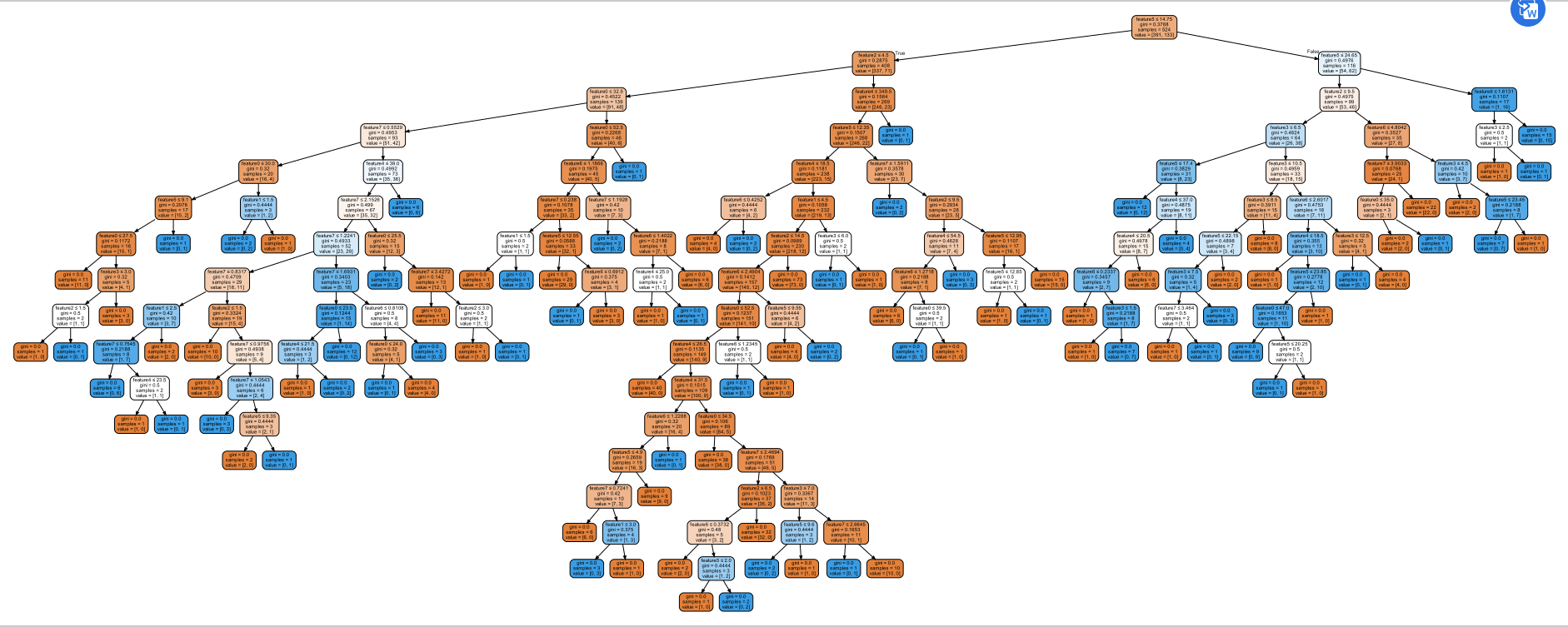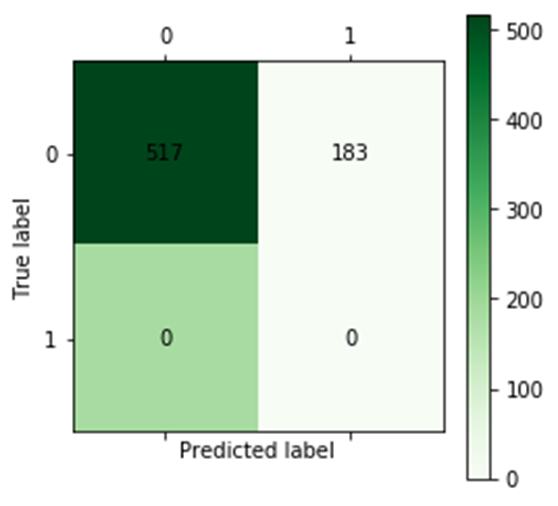ID3决策树算法和BP神经网络算法建立银行分控模型
一.ID3决策树算法
import pandas as pd from sklearn.model_selection import train_test_split from sklearn import tree from sklearn.metrics import precision_recall_curve #准确率与召回率 import numpy as np #import graphviz import os os.environ["PATH"] += os.pathsep + 'C:/Program Files (x86)/Graphviz/bin/' def get_data(): file_path = "data/bankloan.xls" data = pd.read_excel(file_path) loandata = pd.DataFrame(data) ncol = (len(loandata.keys())) print(ncol) # l = list(data.head(0)) #获取表头 # print(l) feature1 = [] for i in range(ncol-1): feature1.append("feature"+str(i)) print(feature1) iris_x = data.iloc[1:, :ncol-1]#此处有冒号,不显示最后一列 iris_y = data.iloc[1:,ncol-1]#此处没有冒号,直接定位 '''计算到底有几个类别''' from collections import Counter counter = Counter(iris_y) con = len(counter) print(counter.keys()) class_names = [] for i in range(con): class_names.append(list(counter.keys())[i]) x_train, x_test, y_train, y_test = train_test_split(iris_x,iris_y) print(x_train) print(y_test) # return x_train, x_test, y_train, y_test #def dtfit(x_train, x_test, y_train, y_test): clf = tree.DecisionTreeClassifier() clf = clf.fit(x_train,y_train) predict_data = clf.predict(x_test) predict_proba = clf.predict_proba(x_test) from sklearn import metrics # Do classification task, # then get the ground truth and the predict label named y_true and y_pred classify_report = metrics.classification_report(y_test, clf.predict(x_test)) confusion_matrix = metrics.confusion_matrix(y_train, clf.predict(x_train)) overall_accuracy = metrics.accuracy_score(y_train, clf.predict(x_train)) acc_for_each_class = metrics.precision_score(y_train,clf.predict(x_train), average=None) overall_accuracy = np.mean(acc_for_each_class) print(classify_report) import pydotplus dot_data = tree.export_graphviz(clf, out_file=None,feature_names=feature1, filled=True, rounded=True, special_characters=True,precision = 4) graph = pydotplus.graph_from_dot_data(dot_data) graph.write_pdf("bankloan.pdf") return classify_report if __name__ == "__main__": x = get_data() #dtfit(x_train, x_test, y_train, y_test)

二、BP神经网络
import pandas as pd from keras.models import Sequential from keras.layers.core import Dense, Activation import numpy as np #读取数据 data = data = pd.read_excel('data/bankloan.xls') x = data.iloc[:,:8].values y = data.iloc[:,8].values #建立模型 model = Sequential() model.add(Dense(input_dim = 8, units = 16)) model.add(Activation('relu')) #用relu函数作为激活函数,能够大幅提供准确度 model.add(Dense(input_dim = 16, units = 1)) model.add(Activation('sigmoid')) #由于是0-1输出,用sigmoid函数作为激活函数 model.compile(loss = 'mean_squared_error', optimizer = 'adam') #编译模型。由于我们做的是二元分类,所以我们指定损失函数为binary_crossentropy,以及模式为binary #另外常见的损失函数还有mean_squared_error、categorical_crossentropy等,请阅读帮助文件。 #求解方法我们指定用adam,还有sgd、rmsprop等可选 model.fit(x, y, epochs = 100, batch_size = 10) #训练模型 #分类 yp = model.predict(x).reshape(len(y)) # 分类预测 yp = yp.astype(np.int32) #画出混淆矩阵图 print("混淆矩阵图:\n") import cm_plot as cp # 导入自行编写的混淆矩阵可视化函数 cp.cm_plot(y,yp).show() # 显示混淆矩阵可视化结果 #损失值 score = model.evaluate(x,y,batch_size=128) #模型评估 print("分类预测损失值:",score)

损失值:0.09988928586244583


